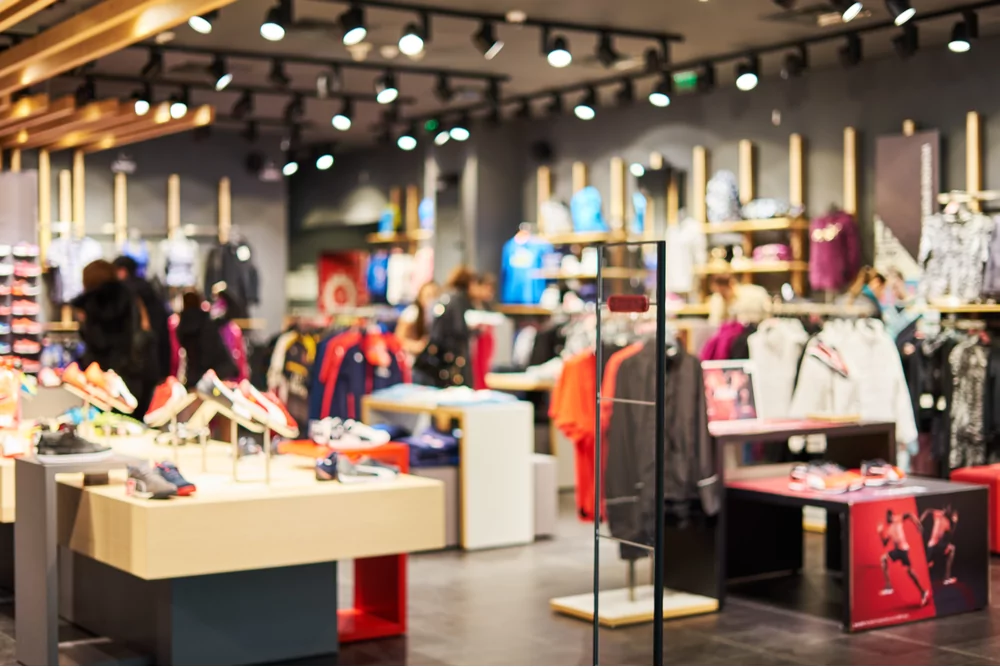
Retail Reduced – September 2024

By Nathan Peacey, Hannah McIntosh, Melissa Story
2 Oct 2024 | 1 minute read
In this month's review of trends in the Retail and Consumer sector we look at the allure of the dark store and how this years fashion shows put more of an emphasis on sustainability.
Trends in the Retail Sector in September 2024
Dark stores began proliferating following the COVID-19 pandemic. These micro-distribution centres are designed solely for online order fulfilment and serve as hubs for product inventory, and efficient package, picking, and shipping. Often occupying previously derelict sites or invisible to the public eye with blank street fronts, they are the centres behind the promise of delivery in under 30 minutes. While consumers increasingly value convenience and efficiency, and retailers seek to reduce operating costs, dark stores present an effective retail model, particularly for groceries.
The first-ever dark shop was launched in 2009 by Tesco. Now, the model is anticipated to generate $414.31 billion of revenue in 2033.
Dark stores are advantageous for businesses because they are closed to the public and this reduces costs normally associated with store design, aesthetics, displays, and marketing. There is no need to make these spaces appealing to shoppers. Instead costs can be attributed to investing in sophisticated, and automated, inventory management systems which ensure efficient order fulfilment. Furthermore, dark stores can remain flexible to market trends, demand, and seasonal fluctuations as warehouse spaces have fewer restrictions than physical stores so they can be easily adapted to meet varying needs.
There are some issues which businesses might wish to consider to decide if dark stores meet their needs:
- Affordability – acquiring suitable stores within prime city centre locations might require a compromise of affordability in favour of proximity to customers.
- Accessibility – can the acquired premises deal with the level of traffic necessary to re-stock and carry out deliveries and what impact will this have on locally-owned businesses and communities? Will increases in traffic create hazards for vulnerable people through increases in congestion and air pollution?
- Sustainability – as more emphasis is placed on sustainable development, regenerating existing warehouses and sites is a progressive step. However, it is important to consider the sustainability of transporting goods from city outskirts to in-the-city hubs and what green energy alternatives might be available, such as electric vehicles and bikes.
The dark store model will not be suitable for all businesses. But they can be a realisation of optimal efficiency for those who heavily invest in online order fulfilment and wish to leverage technology to enhance their operations and meet the demands of the modern consumer.
September was the month of the Fashion Week – with New York, London, Milan, and Paris becoming focal points for some the world’s biggest and most luxurious designers and retailers.
This year, many Fashion Shows exhibited more eco-consciousness than previous years. In London, eBay hosted The Endless Runway; featuring pre-loved looks from designers like Khaite, Christopher Kane and Simone Rocha with other timeless looks available to buy on the selling platform. Oxfam also partnered with Vinted for its Style for Change runway show which sought to be the “ultimate display of sustainable fashion”.
Elsewhere, other brands used their platforms to showcase their eco-friendly solutions to an industry responsible for 10% of global carbon emissions.
In his Spring/Summer 2025 collection, Christian Siriano partnered with Circ, a technology system transforming textile waste into reusable, raw materials. The designer presented a trench coat and a wide leg pant set made up from 40% recycled waste. Meanwhile, performance artist Jeremy Hutchison took to the streets of New York as an eight-foot tall ‘zombie’ made up of discarded clothing. Coach also transformed used garments into streetwear-inspired looks, embracing frayed edges and mismatched fabrics to demonstrate their commitment to environmental responsibility.
Sustainability has become a ‘make-or-break’ factor for brands with more than four-fifths of consumers willing to pay more for sustainability produced or sourced goods. Despite cost-of-living pressures, some consumers are even willing to pay on average 9.7% more for goods that meet specific environmentally friendly criteria such as being locally sourced, produced in a low-carbon supply chain, or made from recyclable materials.
High-end fashion is generally considered to be greener than cheaper, fast-fashion alternatives. Supported by the maxim ‘quality over quantity’, products are often viewed as better quality and part of ‘seasonless’, ‘timeless’ collections.
However, many commentators point out that this idea is a myth. While some luxury clothing can boast greater environmental or ethical credentials, higher price tags primarily comprise of brand margin and retail markup, not increased labour costs. Furthermore, some designer brands destroy their unsold products in efforts to ensure the market does not become saturated with their goods which would devalue the brand.
As we witness a shift in what consumers value, brands need to think about their social responsibility and lay emphasis on sustainable practises which resonate with their customers. A recent report by non-profit Collective Fashion Justice (CFJ) claims just 3.39% of British Fashion Council members have shared emissions reduction targets whilst only 2.4% of member brands have aligned their targets with the Paris Agreement. By prioritising sustainable fashion, retailers can seek to improve their brand image and expand their influence amongst younger and more environmentally conscious consumers.





























































